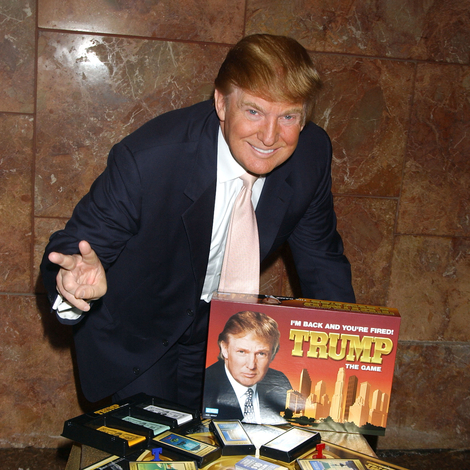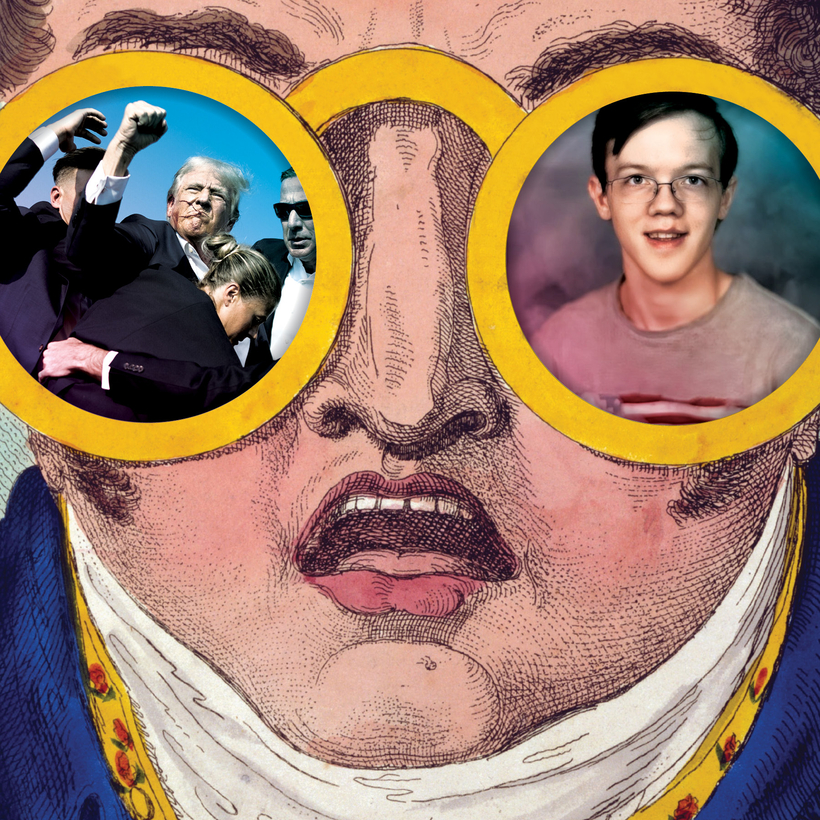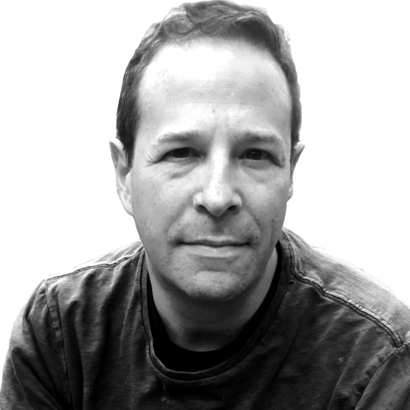I was not especially appalled—not at first, anyway—when I heard, on the evening of July 13, 2024, that Donald Trump had been shot at a political rally in Butler, Pennsylvania. We’ve been stuck in the current moment like a stylus on a scratched record; perhaps this evil act would finally get us back in the groove. But the more I learned about the shooting and the would-be assassin, the more I knew that the shots fired in Butler would only stick us more deeply in the moment.
The 180-page F.B.I report released in December by the Task Force on the Attempted Assassination of Donald J. Trump filled in the details but told us little more than we already knew: the Secret Service screwed up that day, as did the local cops; the particle slipped through the mesh; the would-be killer was killed; having been killed, investigated, and searched, he turned out, from all indications, to have been acting in the classic American manner—alone.
If the story has fallen from the news, maybe it’s because Trump’s flurry of post-inaugural activity has pushed every instant but ‘right now’ from our screens. Maybe it’s because the story does not fit the readymade narrative of the left and right. Maybe it’s because the would-be assassin missed, and in this country we are bored by people who fail. Or maybe it’s because his motive is still unknown. Twelve months out, we still know almost nothing about Thomas Matthew Crooks. The only thing we can agree on is his identity.
Deer Hunter Country
Thomas Matthew Crooks was born 24 months after the Twin Towers came down in New York, the small collapse that, via chain reaction, set off the slow-motion collapse of the American colossus. He grew up in an era of failed wars and increasing paranoia, voting recounts, unsuccessful impeachments, spasms of racial violence. He turned 13 the year Trump was first inaugurated, making him a pure product of modern America.
His biography is frustratingly insubstantial. You want majesty from an assassin, dark basements and fiery political tracts, but that’s usually not what you get, Luigi Mangione being an exception. You get mundanity instead, a quotidian run of typical afternoons.
Crooks’s parents are described as “licensed professional counselors.” Social workers. It’s a term that gives you a sense of the solidly middle class, the college-educated backbone. Which is not the impression you get of the Crooks family in photos, where the failed assassin’s parents look wild-haired and wild-eyed, pulled from a suburban split-level and stood before the cameras. Their lives have become hell—that’s the price you pay for fostering infamy. These days, the Crooks rarely leave their house, venturing out only for the occasional three a.m. supermarket run. The would-be killer’s sister—she lives in an apartment in another part of Bethel Park, Pennsylvania—is a junior-high-school janitor. Two parents, two kids, replacement numbers, the Western ideal.
It’s hard to get a clear picture of Crooks. To some, he seemed a dangerous loner. To others, a polite neighborhood boy. His school photograph is like a bad memory from junior high, a ratty-faced kid on the periphery in a Metallica shirt, his wallet chained to the loop of his Lee jeans, a middle-schooler who keeps to himself in woodshop, where, instead of making a jewelry box like everyone else, he is said to be building a rack for his many guns. Because he was scrawny, some teachers called him “muscles.” In recollections of classmates, Crooks’s timidity drew abuse from the bullies. Is that what put him on the road to Butler, Pennsylvania?
He graduated from Bethel Park High School, spent two years at community college, and made plans to attend Robert Morris University, near Pittsburgh. But as you can learn less about Superman from Smallville, Kansas, than from his home planet, Krypton, you can probably learn less about Crooks from his school experience than from Bethel Park.
Krypton ended in fire. The towns around Bethel Park are ending in rust. Allegheny County boomed early in the 20th century. Then came the union wars, the trade deals, globalization. We mocked him, but Ross Perot was right: there really was a giant sucking sound and the jobs really did disappear, then reappear, first in Mexico, then in China, then in Vietnam. Though the media still describes Bethel Park as middle or even upper-middle class, anyone who has spent time in Pittsburgh’s outer suburban ring knows the truth: these towns, which prospered in the age of manufacturing, died in the age of service.
In the summer of 2024, the summer he became infamous, Crooks worked as an aid at a nursing home, pushing wheelchairs and handing out pills in paper cups. Here he was, just 19, drugging the last inhabitants of Bethel Park who could remember life before the Vietnam War. It’s Deer Hunter country. Chamber the bullet, spin the barrel, put the gun to your head. People who used to do the honorable thing and kill themselves now want to go out in a hail of bullets.
Crooks’s political leanings? Who knows. He gave money to Democratic causes but registered as a Republican. He searched Trump’s campaign schedule but did the same for Biden’s. Was it less the particular politician he was interested in than the act itself?
John Hinckley Jr. had no special animus against Ronald Reagan. He just wanted to kill a president to impress Jodie Foster, whose character was the object of the same sort of mania in Martin Scorsese’s Taxi Driver. The protagonist of that movie, Travis Bickle, did not hate his target, Senator Charles Palantine. He just wanted to do something, anything, to give meaning to his life. History is a parade that, relatively speaking, went right by Thomas Crooks’s front door, same as it had with Lee Harvey Oswald. It offered an opportunity to distinguish himself, get his name in the big book. How could he not clamber to a high place to take a shot at the grand marshal? He needed to act to prove he existed.
According to the F.B.I., Crooks began planning in early July, soon after the Trump campaign added Butler, 50 miles north of Bethel Park, to the schedule. Crooks practiced shooting the AR-15 assault rifle he’d purchased from his father. Though not a great shot—he did not make his high-school marksmanship team—he obviously believed he was good enough for the job. Shortly after the rally was announced, he did a series of Google searches, including “How far away was Oswald from Kennedy.”
A Silver Streak in a Silver Sky
He bought bullets, explosives, detonators—some of which were later found in his car, some of which were found in his parents’ house. He drove his Hyundai on the morning of July 13 to buy a collapsible ladder, then headed to the fairgrounds.
People noticed him. Ladder, rifle, kit bag—he was like the would-be assassin in The Manchurian Candidate. He seemed blissfully unhurried. Did he even imagine he would get this far?
To avoid checkpoints, Crooks picked out a spot on a pitched roof beyond the security perimeter. He flew a drone about 200 yards away from the stage just hours before the rally began—the eye in the sky, the view of a god—then walked the grounds with a range finder, the sort that tells a golfer how far he is from the green. His actions, which were never less than extremely suspicious, were reported to local cops, who warned the Secret Service, but those warnings were lost in the static.
His only interaction with police came toward the end of the day, shortly after Trump had arrived onstage, at 6:03 p.m. A member of the Butler City Police Department noticed him crawling across a roof. Climbing in pursuit, the cop hung from the eaves with just his hat and eyes above the roofline.
“I see Crooks facing downrange towards the stage,” the cop reported later, “but his eyes [turned] back at me as I’m coming up. And I would say, like, his facial expressions was surprised. His eyes were very big, like, what are you doing up here? And from there, he just … slowly turned around. And as I came up, that’s when he pointed his firearm in my face. I could see he had a bookbag with him, I could see [bullet magazines]. I knew he had a long gun, like an AR platform. And as I’m coming up and he’s got the gun pointed at me, I don’t know if I reach for my gun, if I slip, but all I know from that point is I’m looking at him, and all my weight is on my, like, arms, my hands, and I don’t have a grip.”
Letting go, the officer fell eight feet to the ground, landing badly. “I just start yelling to the guys and on the radio … ‘Male on the roof.... He’s got a long gun.’”
Crooks immediately got himself in position, found the target, and began blasting. Much has been made of the weapon he used, the AR-15, as sleek and evil as a vintage Corvette. It’s the speed of its bullet that makes it so deadly. The slug travels 600 yards in under a second—2,250 m.p.h. But it’s the prevalence of the weapon that makes it a problem for society. According to a 2022 Washington Post poll, 31 percent of American adults own a gun and 20 percent of them own an AR-15. That’s 25 million people who own an AR-15, making the rifle as common as the French press. Since 2017, the AR-15 has been used in 17 mass shootings. It’s the preferred gun of mass shooters because it’s the preferred gun of Americans.
Crooks got off eight shots, killing a 50-year-old former fire chief named Corey Comperatore and injuring several others, including Trump, who said he heard the bullet whizz past his ear. In one picture—it’s the sort of image people argue over the way they argue over U.F.O. photos—we see not a bullet but a line, a silver streak in a silver sky. The bullet has gone past its target; Trump has yet to bleed, or even react. Time is frozen at the fork. If he had been killed, he would not be president. If he had not been shot at, he would probably not be president, either. The image of the slug from Crooks’s AR-15 is like an image of fate in action—there has never been another photo like it.

There were four counter-sniper teams scattered on roofs overlooking the fairgrounds in Butler. A member of a local SWAT team, having seen the flash of Crooks’s rifle, returned fire. He missed the shooter but shattered the handle of Crooks’s gun, making it unusable. An instant later, a bullet fired by a Secret Service agent entered Crooks’s brain.
The time was 6:12 p.m., Saturday, July 13, 2024. Crooks was dead 16 seconds after his first shot. Photos of his body turned up on the Internet, small and broken.
“The Indigenous American Berserk”
The story was immediately picked apart for secret players and secret plots, the doings of a shadow government, of nefarious forces. To the lunatic right, the attempted assassination seemed the work of Biden and his minions, who, having failed to jail Trump, were trying to end his career with a gun. For its part, the lunatic left claimed the failed assassination was a MAGA plot, a false-flag operation to swell Trump’s support. They said Trump wasn’t even wounded, that the bandage he wore to the Republican National Convention a few days later was too big, the blood in the photos too red, and the recovery from the so-called injury too fast. And where the hell is the scar?
A private investigator named Doug Hagmann, hired to look into the case by God knows who—“a private client,” he claims—told the New York Post that he believed the failed assassination attempt was part of a conspiracy: “We don’t think he acted alone,” explained Hagmann. “This took a lot of coordination. In my view, Crooks was handled by more than one individual and he was used for this [assassination attempt]. And I wouldn’t preclude the possibility that there were people at the rally itself helping him.”
Then again, Hagmann, it turned out, had been one of the earliest proponents of Pizzagate—the pedophile conspiracy theory claiming that prominent Democrats were drinking the blood of children in the nonexistent basement of a Washington, D.C., pizzeria. Hagmann’s particular conspiracy theory about Crooks never panned out, nor was it followed up on or retracted, which is how it is with much of the news. The shocking claim is what matters. God will sort it out later.
In fact, Crooks’s biography, the details of his life, the e-mails and Web searches and school reports so carefully chronicled in newspapers and on TV amount to … nothing. You add the numbers and check the math but in no way do they explain the lone gunman telling his father he was heading to the shooting range but driving his Hyundai to Butler instead, evading the checkpoints, ducking the cops and taking his place on that roof.
Every road is a dead end with Crooks, every lead a false lead, every herring is colored red. It gets at the inscrutability of the human mind in the third decade of the 21st century, a mind unbalanced by social media and the confusing, ceaseless churn of politics, wherein trying to focus on any single event is like trying to focus on a single item—a shirt, say—whipping through the spin cycle of a glass-doored washing machine.
So, yes, we do know who shot Trump, but we will probably never know why. Was Crooks succumbing to a familial propensity for mental illness, as some have suggested? Had he been driven past reason by Trump’s crimes against the Republic? Was Crooks a Zoomer John Wilkes Booth leaping onto the stage to shout, “Sic semper tyrannis!”? Or had he simply fallen in love with the beauty of his weapon?
We don’t know the motive because Crooks probably never knew it himself. Madness in every direction—that’s what Philip Roth meant by “the indigenous American berserk.” The history of the United States is punctuated by the sudden chaos-making appearances of lost souls, free radicals loosed by the violent collisions of mass society. Lee Harvey Oswald is the most renowned, but there have been many others—Sirhan Sirhan, who killed Robert Kennedy in 1968, paving the way for Nixon. John Hinckley Jr., who shot Reagan to impress a movie star. Mark David Chapman, who shot John Lennon, apparently because he did not like the former Beatle’s solo work.
In this era, conspiracy theories have taken the place of consensus. We have come to rely on them, to be soothed by them. Trump is a K.G.B. plant. Barack Obama was born in Kenya. They help explain the unexplainable.
But Crooks defies such scenario-making. The boy offers nothing to grasp. He is an example of the furthest strain of American individualism, a character way out on the frontier, beyond understanding. A conspiracy, even one made of nefarious players, at least suggests a degree of organization. It might be evil, but at least someone is in control. You can uncover a conspiracy and jail the conspirators, but what can be done about a lone gunman? A lone gunman means no plan, no reason. The ship is under full steam. The pilothouse is empty.
Rich Cohen is an Editor at Large at AIR MAIL


